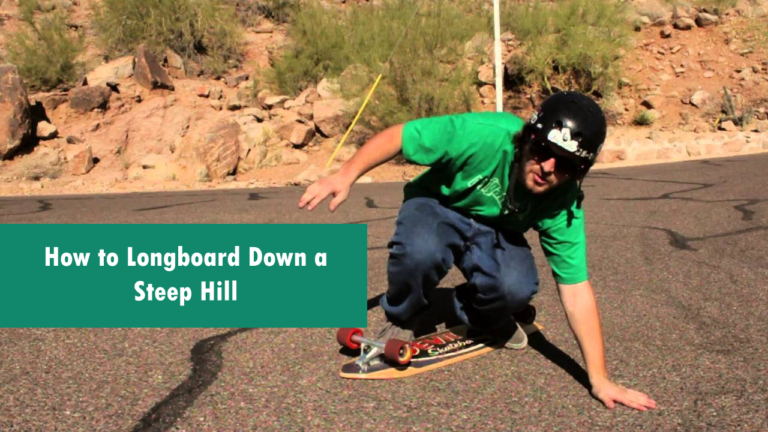Longboard LDP: The Guide of Long Distance Pumping Longboard
What exactly is the LDP longboard, and how do you longboard the LDP?
It’s about covering long distances in a minimum of time, mainly by kicking but sometimes by mixing pushing and pumping.
On the other hand, Serious LDP runners train hard to build endurance and speed, continually measure their performance, and compete in challenging sporting events.
LDP, or Long Distance Pushing and Pumping, is a longboard discipline that is slowly gaining ground in Singapore and is gradually developing. LDP cards are usually platform bridges, support cards, or pump/push configurations.
Why the LDP Longboard?
When asked what attracted them to the LDP longboard, riders had different answers, including: Some can travel on a long board between cities and get caught up in the LDP.
Many cyclists are drawn to LDP rides after reading and watching Adam Colton’s Rides, a regular source of inspiration for LDPers. The main focus of the serious LDP longboard is speed and distance. Ultra-skaters typically compete in races over 60 miles.
Fundamental Mastery and Strategies for the LDP Longboard
Stance, stance, and pushing motion are key components to achieving high efficiency, allowing you to skate faster over longer distances. It is important to stay centered and reduce unnecessary movement as much as possible to maintain a very high pace for as long as possible in a race.
Longboarders on an LDP are always looking for small ways to improve their speed and efficiency while trying to keep the same speed over longer distances.
During the leg extension phase of the kicking motion, LDP users tend to use smaller muscle groups than the less efficient large hinged motors, both for effective pushing and self-prevention.
Well-trained LDP pilots can easily reach maximum thrust speeds of 22 mph while remaining linear. However, once they exceed a certain speed, usually around 24 mph, LDP skaters risk losing control, becoming out of sync, or even crashing.
LDP Longboard Setup
The board set-up is pretty simple once you get used to it but can feel a bit daunting for beginners with the addition of spherical shapes that don’t usually occur on entry-level boards.
Adjusting the handlebar width can help you find the feel and ride quality you want. If you like the notch/pump nice and cool, you might want to set it to the wider option, while if you like high-speed pumping, you might choose to set it narrower for faster feedback and more responsive in the middle. These are good starting points, but it all comes down to your riding style and personal preference, so adjust according to what works best for you.
After testing a few bus combinations, I find that a Riptide 87.5a fat cone rim and a Riptide 85a barrel road rim work best for both the Hydra and the Insania and can pump comfortably at around 20- 24 km/h while managing it at the same time to also do slow and relaxed pushups with it.
The Antidote provides an adjustable wheelbase of 51 or 54 cm on a wheelbase.
LDP Longboard Complete
It is better than increasing the speed at a given distance for months of training.
Some gym routines provide effective crossover exercises for the LDP longboard. Specifically, the combination of major muscle exercises such as squats, deadlifts, bench presses, riding pull-ups, dips, lattice pull-ups, shoulder presses, shoulder lateral raises, and leg curls, helps improve overall stability.
Such a weightlifting routine should be supplemented with running to build endurance. It would help if you alternated long, slow runs with intense interval exercises. Wear medium-sized running shoes or sneakers. So that you will stay safe in while longbaording.
Long distance longboard decks and best Type of Rig
The best type of rig for LDP (push, not pump) is a drop rig. However the combination of drop deck and fallout mountain (also known as a “double drop”) results in the lowest row of boards to push.
Lightweight foot bags also help pump if you’re alternating with long-distance thrusts. A compromise between comfort and efficiency.
More advanced LDP longboard riders can opt for a stand set-up, e.g. with G-Bomb mounts. These are the Formula 1 LDP longboard ranges; they are a great choice for serious riders who train hard in LDP and compete in events.
LDP Expect to drive for hours
You need to set aside enough time if you plan to drive interstate. Some even drive more than half a day. But if you are the professional you can complete it for a hour day. While if you are the beginner you may take to complete LDP in a day.
Long-distance push
However, the pressure kick in the long-range long-board took this technique a notch higher. To achieve this, here are the common things you need to consider.
The height of your plate can affect how much you lean forward and bend your knee when you push off.
How long do you have to push with your foot off the ground?
The amount of time you can stand on one leg between pushups while your hind leg is in the air.
Print models: Since you will drive for many hours, you need to learn the different types of push patterns. So you can alternate them to prevent you from getting tired.
Normal pressure: It involves rolling with your normal posture and using your hind foot to push down.
Mongo stood: It’s almost the same as a regular push, but you use your forefoot to push while keeping your hind foot at the back of the bridge.
Push switch: Instead of rolling in your natural position, you should be in the opposite position.
Shovel: It gets its name from the combination of skating and jogging while skating by using each foot alternately to cover distances, which is similar to jogging. Many long-distance long-board riders practice and practice jogging because of its benefits.
One is to rest each side of your hip, leg and abdomen for a moment.
Long-Distance Pumping
Pumping is to get your body on your long-board by moving your weight forward and backwards while turning without touching your foot on the ground. However, pumping longer distances is something new in the world of skating.
To be successful with pumping, you need to control your posture and body movements. It starts with an S-like movement from your chest to your core and along your body until the movement hits the plate, trucks and your wheels. It is as if your lower body is chasing your upper body.
It will maneuver your board slightly from side to side, which will help increase speed and energy at the same time.
Trucks and wheels
LDP longboard riders often use Randal trucks, known as excellent push trucks.
For pure thrust, the front and rear 50º trucks work perfectly, offering a good balance between stability and cornering.
Be aware that actual pump set-ups are very different from pure push settings – top-mounted tires, smaller wheels, un ballasted trucks, etc.
Famous Longboard LDP Configurations
Some riders prefer the more expensive 20º low-angle Don’t Trip Poppies to run at the rear for better stability when the switch is pressed at high speeds.
You can pair it with independent trucks, large Orangutans agamas or similar wheels. For efficient pumping, you want to weigh your front trucks high but keep your rear trucks firmly angled or down to get the maximum acceleration from your pushups.

Pure pushups, on the other hand, are usually symmetrical.
Messing around with corners makes pumping a lot easier. Pure pump set-ups, however, typically use top-mounted tires raised off the ground (as opposed to thrust) to ease the weight onto the truck/front wheels.
For an all-around LDP push and pump board, the Subsonic Century 36 is a great hybrid option for all levels of rider.
How to longboard LDP
When I went through speed bumps, bumps or imperfections in the park couplers, I noticed some vibration damping with the bridge, which helped dampen the hum and stutter pretty well. Vibes. While the TTA is a good choice for racing applications, especially where straight-line speeds are involved and more stable riding, the Exile set-up could handle a wider range of speeds while pumping, and pumps at low speed could be used with much more ease. While being fun and fiery.
Compared to the Poppy’s, I found the front Hydra truck to be noticeably more rotational and responsive when pumped, and when mated to the rear Insignia mount, it makes for an incredibly smooth and nimble ride. It means it is easier and more natural to start a pump, encourages you to pump even more the faster you go, and can handle steep turns significantly better than twist tails (TTA/TTS).
As someone who swings regularly, alternating right and left foot presses (steady press then mongo switch for me) regularly, the concave was very beneficial as before on the C26 deck—foot at the waist, which made shaking almost effortless.
From 19 to 22 km / h and without feeling slippery. Indicate.
Whether you’re taking it out for a light pushing and low-speed carving tour, a quick drive to the neighborhood cafe for lunch, or a race day where you want a podium finish, the Antidote Panel Exile is versatile. A fun, dynamic, and fiery ride that will keep you coming back for more.
FAQS
What Is The LDP Longboard?
LDP, otherwise known as Long Distance Pushing/Pumping, is a type of longboarding that is becoming increasingly popular in Singapore. The boards used in this discipline are commonly referred to as platform decks, bracket boards, or push/pump setups.
How To Get Good At Longboarding?
To become skilled at longboarding, it is important to practice regularly and gain experience. Additionally, one should keep up with the latest trends, watch tutorials online, and take lessons from a professional if possible.
Additionally, it is important to have the right board and protective gear for safety. Finally, make sure to stay positive and have fun while learning!
How To Go Faster On A Longboard?
Improve Your Form: The first step to going faster on a longboard is to make sure your form is correct. Make sure your center of gravity is low and that you are pushing off with each foot evenly.
Increase Wheel Size: Increasing the size of your wheels will help you go faster on a longboard. Bigger wheels will allow you to get more speed due to their larger circumference, while still providing grip and control.
Get the Right Bearings: Make sure you have high-quality bearings installed in your longboard as this will help reduce friction and allow for smoother rides at higher speeds.
Get a Longer Board: A longer board allows for more stability at higher speeds, so if you want to go faster, consider getting a longer board specifically designed for speed and downhill riding.
Adjust Your Stance: If you’re having trouble balancing yourself at higher speeds, try adjusting your stance by widening or narrowing it and experimenting with different angles until you find what works best for you.
Upgrade Your Bushings: Upgrading your bushings can also increase your speed due to the improved response time they provide when turning or shifting weight from one foot to another.
Practice: Finally, practice makes perfect! The more time spent on the board, the better control you’ll have over it and the faster you’ll be able to ride it!

I am a longboarding enthusiast and a blogger. On this blog, I share tips, tricks, and advice based on my experience. I am dedicated to helping newbies improve their skills and enjoy this fun activity to the fullest.
Disclosure:This post may contain affiliate links. If you click on a link and make a purchase, we may earn a commission at no additional cost to you. Learn more.







